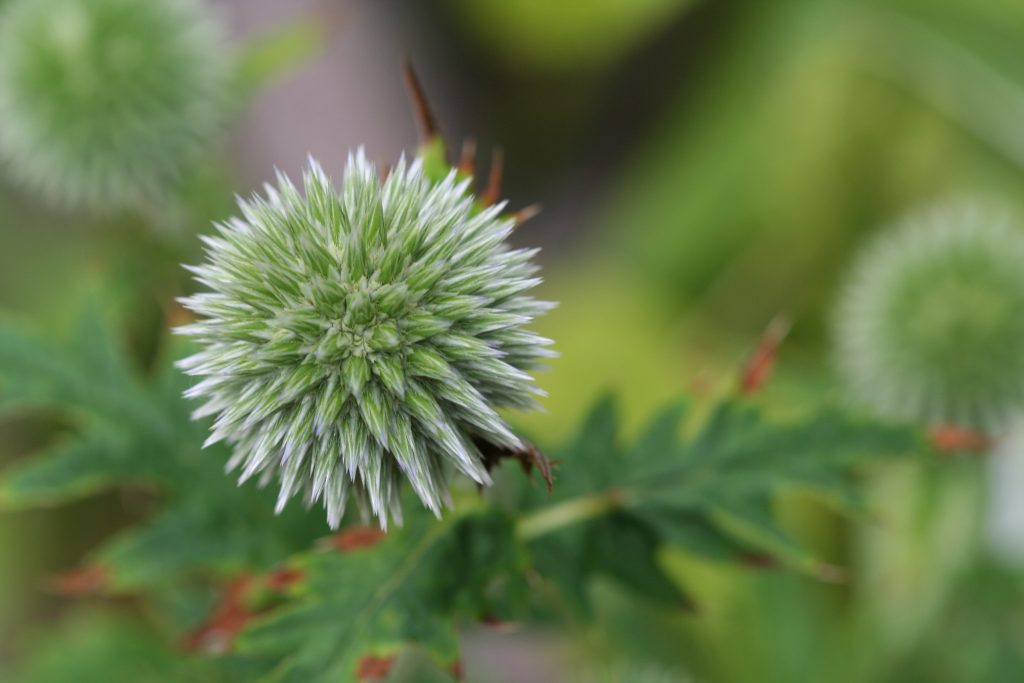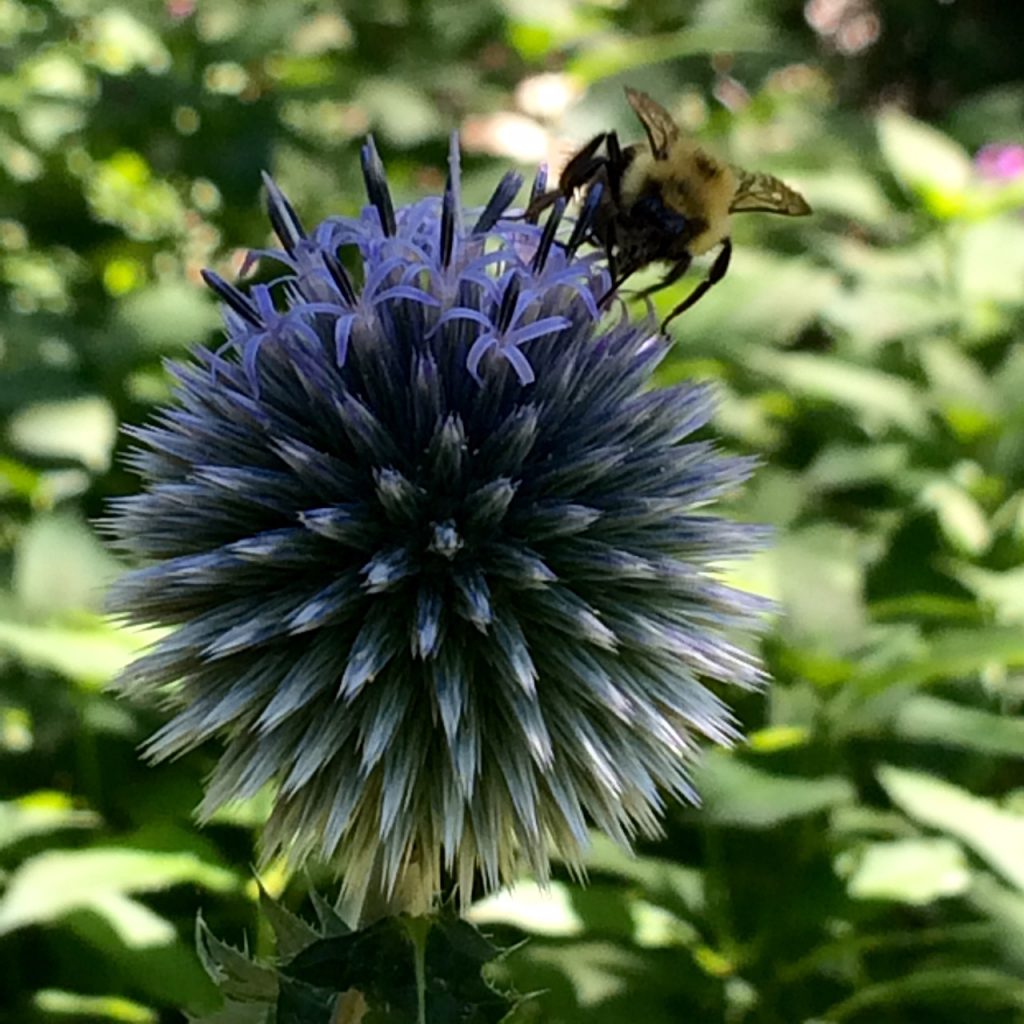Plant Profile: Globe Thistle

I have to admit it—any plant with the word “thistle” in its name makes me nervous. Canada thistle was a persistent weed in my previous garden. Globe thistle (Echinops rito) is a different story. A native of Europe, it adapts well to our Midwestern soil and climate. It may self-seed but it is not aggressive, according to Cornell University horticulturists.
The plant shows up in many Minnesota gardens where it works well in extremely sunny, sometimes dry conditions—and it is hardy up to USDA Zone 3, making it a stunning choice for northern Minnesota gardens. The plant’s foliage is dark green and deeply lobed, attractive enough but nothing special. It does resemble a thistle. It’s the blooms, which start in July and continue well into the fall that are the main event here.

Each flower is a globe (hence the name!) that looks like it came from outer space. A dusty lavender color that hints of straight-up blue, it has prickly looking spikes around the ball, which open into tiny florets. The plants seem to be popular with bees, based on the action I noticed them getting during two recent garden tours. (There are so many great garden tours in Minnesota each summer — check out this listing for upcoming events.)
In the right spot, this is an easy care perennial. It likes a sunny to partly sunny spot and very well-drained soil. If the soil is soggy, it probably won’t do well. Plants can get between 2 and 4 feet tall with very few pests or disease problems. Varieties to consider are ‘Blue Glow’, ‘Sea Stone’ (a somewhat shorter variety) or ‘Veitch’s Blue’.
For a plant that will stop visitors in their tracks, give you a bit of blue in the garden and bring in lots of bees, globe thistle is a terrific choice.

I agree this is a wonderful plant and it is putting on a show in my garden right now. However, it is candy for four-lined plant bug and I nearly lost my plants to this pest. I was forced to use a pesticide in my usually chemical-free garden. Nevertheless I would not be without it.
Thanks for the heads up! Did not know it was attractive to the four-lined plant bug.
We have a thistle that appears to be this type, but the leaves look like spearmint plants. The heads are so barbed we have to haul them away to keep them out of the dog’s feet. I can’t imagine anyone deliberately growing this for any reason. Do you know of any non-chemical, non-poisonous way to kill it?
I love globe thistles for their color, shape, and attractiveness to pollinators. There are usually several bees/beetles for every flower (and they don’t seem to be preferred by the Japenese beetles). However, I started with 3 globe thistle plants and they are starting to take over the flower bed and have found them further into the lawn. I will be slowly reseeding them to the back yard where they can compete with the buck thorn from the railroad property behind me and to keep all the pollinators happy. I would caution people about the amount that they self-seed.
Thanks for the tip!
I received some seeds from a neighbor today. I understand that I should plant them in the spring. But do I need to freeze them over the winter?
I planted 2 veitch’s blue globe about 2 weeks ago and both have gotten some kind of pest or disease. The top 50% of the plant is yellow and curling. It does not look healthy at all. They’ve stopped growing as well. Help!
If you bought them from a nursery, consider taking them back or taking a photo and asking the nursery what the problem is.
I see lots of bees on the flower. Is it good for native bees.